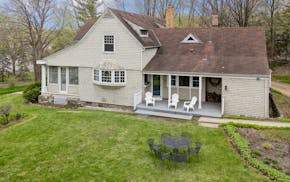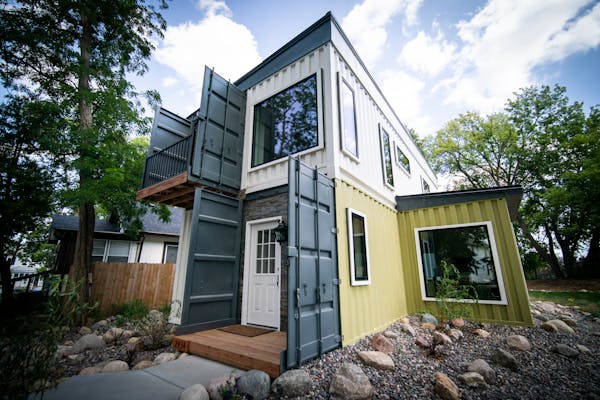Home sales in the Twin Cities metro last month were down compared with last year, but it's not because there aren't enough buyers. It's a listing problem. And an affordability problem.
During August, there was a double-digit annual decline in house listings in the metro, which helped drive another double-digit increase in house prices.
"Home prices have increased more than the ability of some buyers to afford them," said Tracy Baglio, president of the Saint Paul Area Association of Realtors (SPAAR).
At the end of month there were 7,686 houses for sale in the metro, more than 20% fewer than last year, according to a joint report from SPAAR and the Minneapolis Area Realtors (MAR).
The decline in listings helped trigger a decline in sales. During the month, buyers in the metro signed 6,525 purchase agreements, a nearly 11% decline over last year when the pandemic pushed the spring buying season further into the fall.
Still, with more buyers than sellers in some parts of the metro and bidding wars still common, the median price of all sales increased 11% to $350,000.
Despite the steep monthly decline in pending sales, home sales in the Twin Cities are on pace to beat last year by a long shot. From January through August, closings were up more than 8% compared with last year but total listings are up only a couple of percentage points.
And despite the decline in pending sales, there were other indications that it's still a seller's market in the metro. At the current sales pace there were only listings to last 1.4 months, the lowest inventory for any August since 2003. On average, houses sold in about three weeks — twice as fast as last year. And sellers got 102.4 percent of their list price, an indication that bidding wars are still common.
Statewide, there were also signs of a constrained market. Homes sales — and new listings — were both down about 3%, over the previous year, but the median price of those sales was up more than 11 % to $316,000, according to the Minnesota Realtors.
"One silver lining is that average 30-year mortgage rates have remained historically low, around 2.9 percent, through most of the summer," said Todd Walker, MAR president. "Historically low interest rates are helping ease the monthly payment of the higher home prices."
When it comes to house listings, the Twin Cities is bucking the national trend. While listings in the Twin Cities were down compared with the previous month and the year before, available housing inventory nationwide grew for the fourth straight month, according to Zillow. Austin, Texas, and Washington, D.C., for example, now have more inventory than they did a year ago.
The online real estate website said that across the country house-price gains slowed during August in 43 of the 50 largest metros. During the previous month, prices slowed in only 20 metros with the biggest declines in Buffalo, N.Y., San Diego, San Francisco and Austin.
Nationwide, home values are still up a record-breaking 17.7% compared with a year ago, bringing the typical U.S. home value to $303,288. The biggest gains were in Austin (44.8%), Phoenix (31.8%), Salt Lake City (27.9%) and San Diego (26.9%).
Zillow said that the share of listings with a price cut rose for the fourth consecutive month, further evidence of a market returning to balance. The share of listings with a price cut grew 1.9 percentage points in August, with a total of 12.3% of listings in the U.S. seeing a price reduction before an offer is accepted. In August 2019, the total share was 17.4%.
The group said that price cuts are becoming slightly less common in the Twin Cities. During August, the online real estate site said, the share share of listings with a price cut during the month was 13.8% compared to 11% in July .
.
New virus is wiping out Minnesota turkey flocks, costing farmers $112M so far

Part of the family for 75 years, 19th-century house near Lake Minnetonka listed at $2M

St. Louis Park firm files IPO to become Minnesota's next public company

Amazon suspends Minnesota data center as lawmakers plan to reduce Big Tech tax breaks

